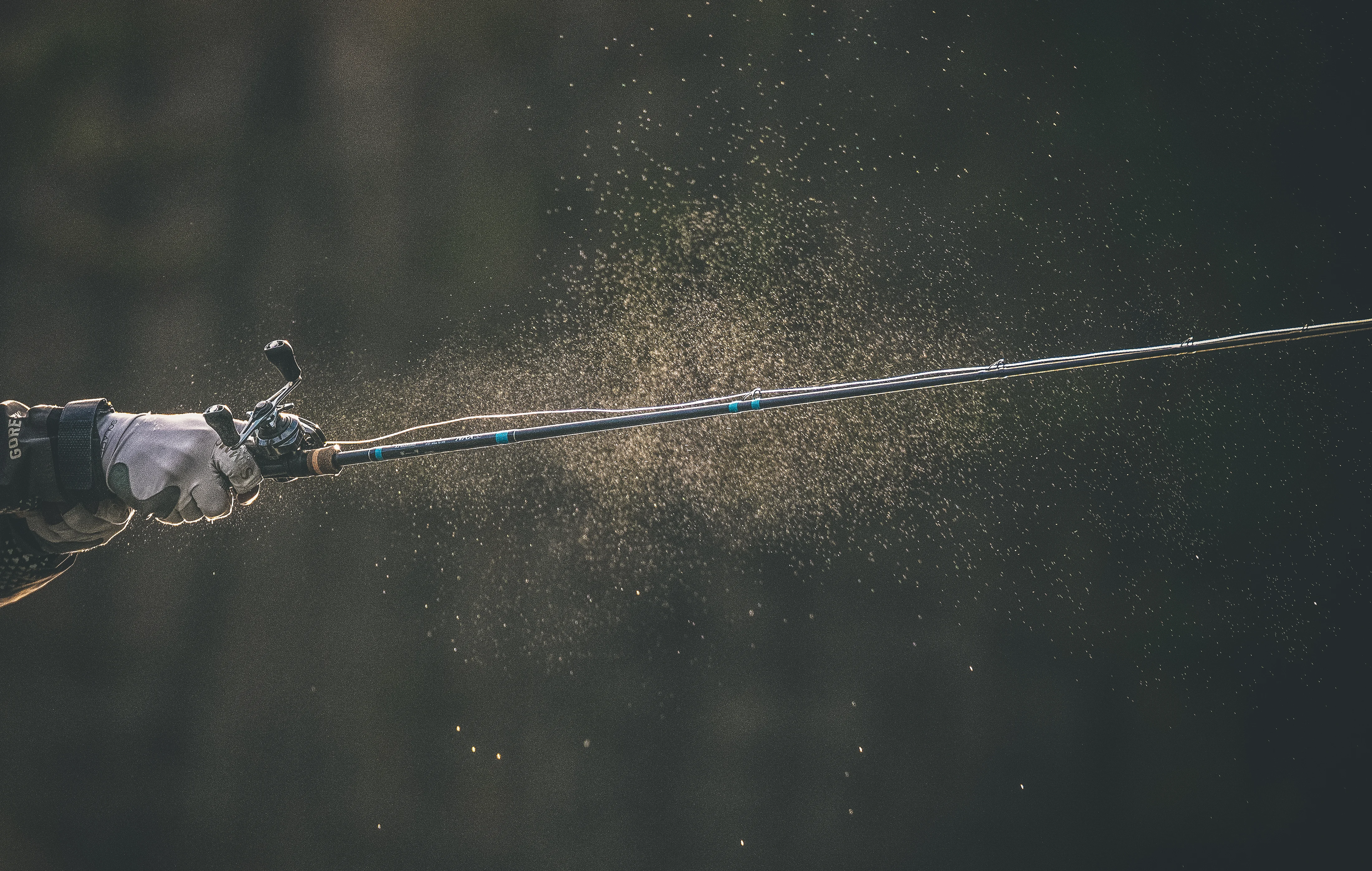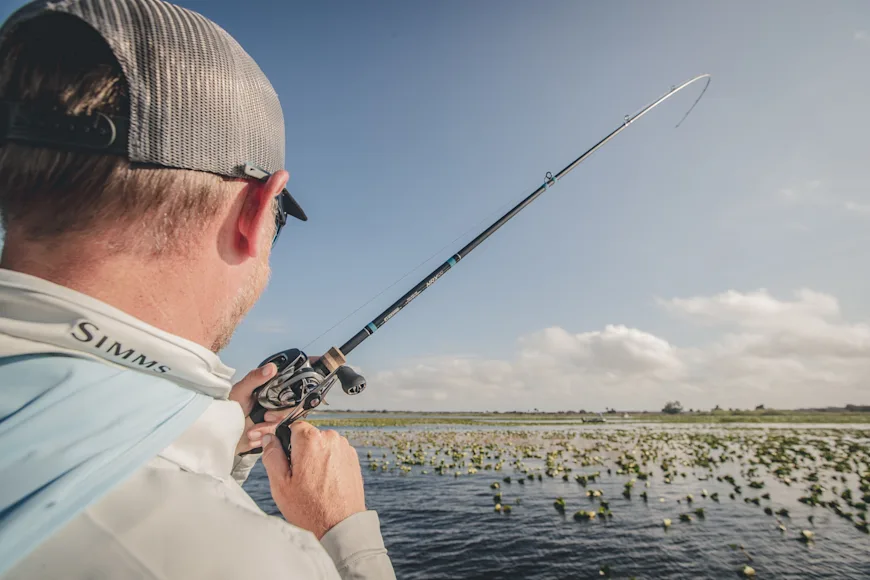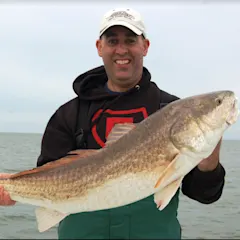By the time summer creeps to an end, most local bass populations are as tired as the rest of us. They’ve been beaten on since spring by overanxious and increasingly sophisticated anglers, plus the heat has them in a funk. That’s especially true in the South, where the pressure is year-round, and the heat seems to be oppressive for much of that time.
The dog days of summer also mean that bass usually move off-shore for cooler water or retreat to thick vegetation for the same reason. And while anglers will most likely have better success in deeper water, the excitement of a 5-pounder exploding through a thick mat of lily pads is worth the effort. That's why you should be throwing frogs in the thickest and nastiest cover you can find during August and September. Because although you might catch fewer fish, you still have a good chance of catching a lunker on one of the most exciting techniques in all of bass fishing.
To help you better prepare for fishing late-summer frogs, I sat down with bass fishing guide Clark Reehm to discuss the dos and don'ts of throwing these topwater baits. Follow the following tips to hook more bass through the grass while temperatures are at their highest.

1. Adjust Expectations
Frogging is a very visual and visceral form of fishing. The strikes are often sudden and violent, and while some days frogs can be a numbers generator, most of the time, it's not. However, the few strikes you do get often come in the form of big fish.
“I compare frogging to using forward-facing sonar,” Reehm said. “You’re targeting bigger fish. Most of the time I’m not fishing for 20 bites this time of year. I’m looking for six to ten bites a day.”
Adjusting your expectations is key to successfully fishing frogs late into the summer. It takes discipline to beat the mats all day long with few bites to show for it. But if you stick with it, the one big bite you're looking for will eventually come.
By this point in the season, vegetation is fully matured and often topped out. Whether your local fishery features hydrilla, milfoil, lily pads, or something else, the bass that have stayed shallow are craving the coolness that exists in those dark recesses. Target these highly vegetative areas even if they look completely choked out.
2. Look for Life
Even the best-looking mats in historically productive spots can be devoid of fish if they’re devoid of life. At this time of year in particular, bass don’t want to move far to eat. If you don’t hear bluegill popping or see shad or perch moving around, there’s a pretty good chance you aren’t going to get bites.
“Typically, frog eaters are bream eaters,” says Reehm. “Then the shad start moving more in the fall. I’m looking for any sort of life. If there’s life, there’s potential, but if I’m there 10 minutes and don’t see any, I’m getting the heck out of dodge.”
Look to the edges of grass mats and lily pads for baits, bluegills, and any other sort of life. If you see smaller fish or bait swimming around the area, there's a good chance bass are under the mats. If you don't see anything, move on to the next spot.

3. Simplify Your Frog Selection
Reehm thinks most anglers give bass too much credit for intellect when making frog color choices. It’s especially possible to overthink it when the bass will be crashing through thick mats of salad to get to their baits. It’s more about presence than a particular match-the-hatch look.
“I use three colors—white, black, and some sort of natural shade," says Reehm. "In a buzz frog, that natural shade could be watermelon red with a pearl belly. In a hollow frog it’s usually some sort of green or brown. Find a color you have confidence in and roll with it.”
Reehm typically keeps two frog rods on the deck of his Skeeter. One has a Ribbit buzz toad rigged on a double-take hook. He likes the weighted hook because it acts like a keel on the bait and also pushes down on the mat, making its presence known. Because bass are typically spread out this time of year, this is his tool for covering water. It allows him to make long bomb casts or short skips under overhanging cover, and then retrieve it back to the boat at a steady hum. The Double Take hook produces more hookups on this notoriously unreliable technique.
When Reehm gets to an area that he’s convinced is holding fish, he’ll slow down with the hollow Boom Boom frog. It also has a super-sharp Mustad Wide Gap hook to maximize productivity. Often, fish will blow up on it with the intention of killing or stunning the bait, and then frantically look to where it’s landed to find an easy meal. That’s why Reehm resists the urge to reel a missed strike back to the boat. Instead, he lets it sit.
“I’ll leave it there as long as possible if I think they’re searching for it,” he said.
Once they strike, the key is to get them on top of the greenery and muscle them across, but if they get bogged down, he won’t hesitate to put on life jackets, raise the big motor, and go in after them.
4. Use the Correct Gear
A high-speed reel is critical to getting the frog back to the boat and firing out another cast once it leaves the perceived strike zone. For both types of frogs, Reehm employs a 7:1 or 8:1 gear ratio, usually a Daiwa Tatula, which he’s found to be smooth, reliable, and muscular. He spools it with thin, but exceptionally strong 60-pound Sunline FX2 braid.
For the hollow frog, Reehm uses a 7’3” Dobyns Champion rod that allows him to fish the tip down without slapping the water. This rod maximizes casting distance and leverage on a hooked fish. With the Ribbit, he’ll power down a notch to the 735. He still needs that length and power, but the slightly lighter rod has just enough tip action so that it loads up when he gets a bite, and doesn’t pull the bait away from an awkwardly-hooked or not fully committed bass.


